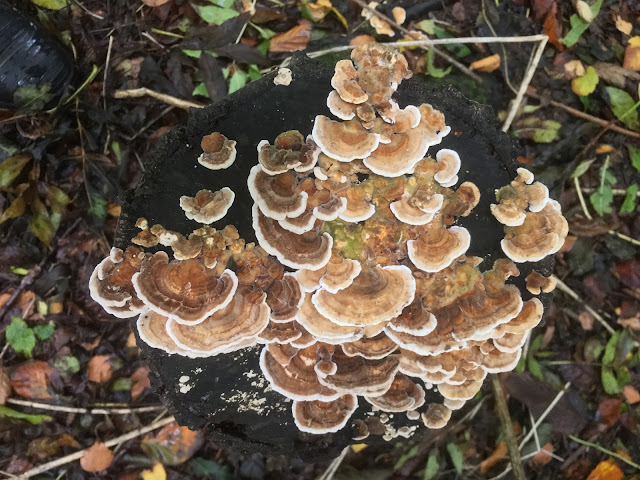Even on a wet November day I found a dozen wild flowers at Filnore Woods
The last of the red clover
Bramble, probably too late to set fruit
Tufted vetch with a tendril at the end of each leaf
Herb Robert - look at the seedpods
Creeping thistle, defended by those spiny leaves
Something from the dandelion tribe - maybe a Catsear
Ragwort - we didn't pull all of it up, it seems
Ivy flowers (yellow) just turning into berries (green)
which will later turn black
Rather faded Yarrow
White deadnettle
Hogweed is one of my favourites although it is a bit invasive
I like the Y-shaped petals on the outside of each flower cluster, - like rabbit's ears
But as it produces all these seeds, it grows everywhere
It's so well designed, so that every little flower gets the maximum sunlight. And incidentally this elegant and statuesque structure is the result.
And this green stuff, which later becomes brown and stiff, as you can see in the background, is the flower head of dock.
Yes those really are flowers.































































